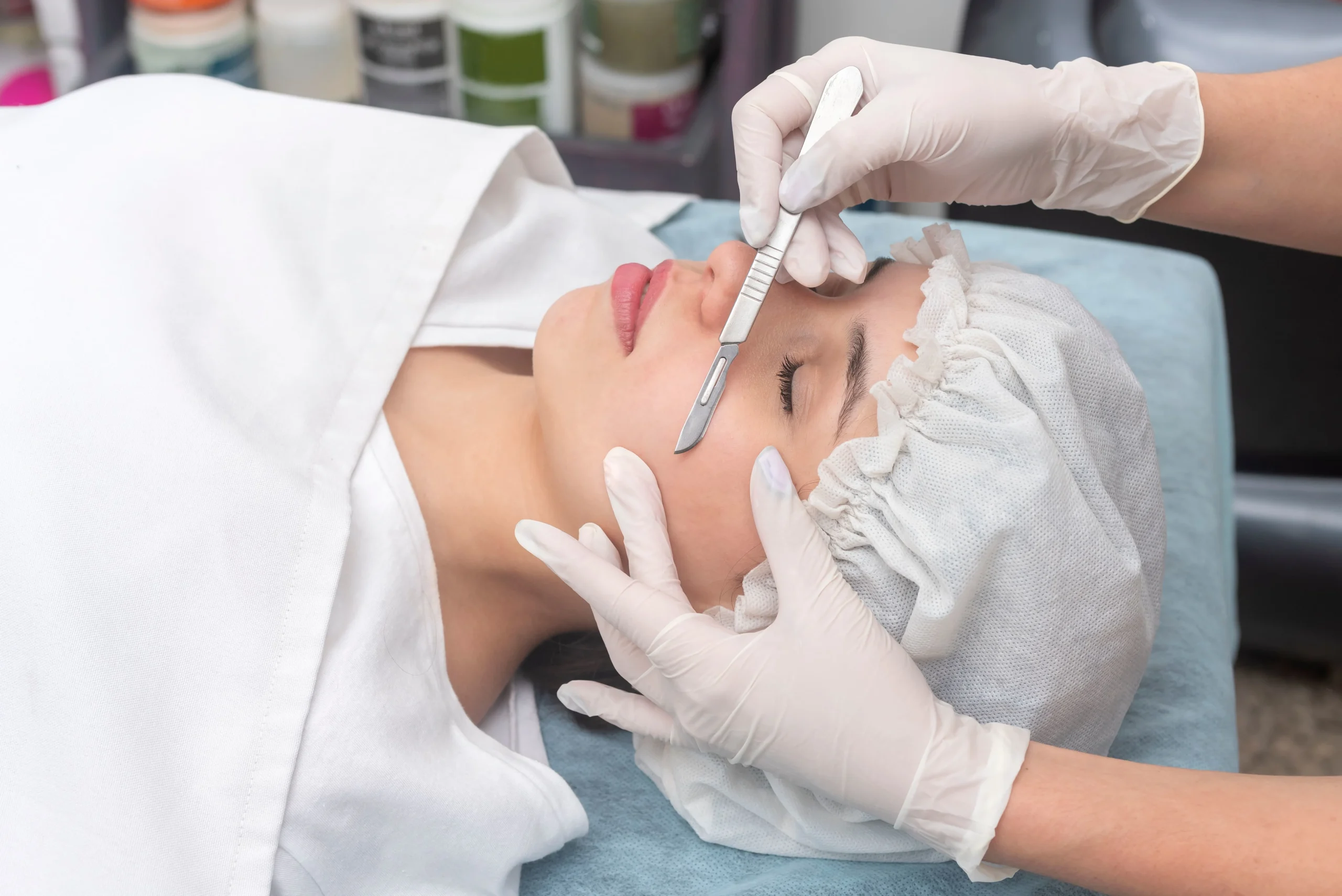

Dermaplaning is a non-invasive exfoliating procedure that leaves the skin clean, luminous, and more responsive to skincare products by removing fine facial hair and dead skin cells. However, its effectiveness and safety can differ depending on your skin type, making it important to tailor the treatment accordingly. Let’s explore how dermaplaning can be customized to best suit the unique conditions of various skin types.
Dermaplaning is a gentle skin treatment that removes dead skin cells and fine facial hair through exfoliation, leading to a smoother, brighter complexion. This procedure also improves the skin’s ability to absorb skincare products, enhancing their effectiveness. While suitable for many, the treatment should be tailored to individual skin types for optimal safety and results.
When performed correctly, dermaplaning can greatly benefit oily and acne-prone skin. The treatment helps remove excess oil and dead skin cells that can clog pores and lead to breakouts. By exfoliating the skin’s surface, dermaplaning reduces the risk of future acne flare-ups.
Dry and sensitive skin types require a more cautious approach to dermaplaning. While the treatment can help remove flaky skin and improve texture, it’s crucial to avoid over-exfoliation, which can lead to irritation and increased sensitivity.
Normal skin, with its balanced oil production and minimal sensitivity, is generally well-suited to dermaplaning. The treatment can enhance the skin’s natural glow and smooth texture, making it look even more radiant.
Combination skin, characterized by an oily T-zone and dry or normal areas elsewhere, requires a tailored approach to address the varying needs of different facial zones. The key is to balance the treatment across the face without exacerbating oiliness or dryness.
Mature skin often has different needs due to decreased cell turnover, the presence of fine lines, and a loss of elasticity. When it comes to smoothing out fine wrinkles and encouraging a smoother texture, dermaplaning can be very helpful for aged skin.
Before undergoing dermaplaning, it’s important to evaluate your skin type and sensitivity level to prevent any potential irritation or adverse reactions. Avoid performing the treatment on areas with active acne, rosacea, or open wounds, as this can worsen these conditions. Proper assessment ensures the procedure is safe and effective for your skin.
Ensuring that the tools used during dermaplaning are properly sterilized is crucial to preventing infections. Using non-sterilized tools can introduce harmful bacteria into the skin, leading to serious complications. It’s essential to choose a professional who adheres to strict hygiene standards.
Consulting with a licensed skincare professional is vital to determine if dermaplaning is suitable for your skin type and condition. After the treatment, it’s necessary to apply a broad-spectrum sunscreen to protect your skin from increased sun sensitivity. This will help maintain the results and shield your skin from harmful UV rays.
When customized for your particular skin type, dermaplaning can improve your complexion and yield the best possible outcomes while preserving the integrity and balance of your skin. The Park MedSpa’s dermaplaning services offer immediate, long-lasting results that brighten and smooth the skin, enhancing its clarity and radiance without harsh chemicals or downtime, making it an ideal non-invasive option for flawless makeup application and a glowing complexion. Experience instantly smoother, brighter skin with dermaplaning, a non-invasive treatment that gently exfoliates and reveals a radiant complexion, perfect for enhancing your natural beauty.
Our boutique Spa will offer you a free consultation, a relaxed and unique atmosphere with a fair price structure and the opportunity to benefit from special programs and promotions throughout the year.
We would love to hear from you!
Please fill out this form and we will get in touch with you shortly.